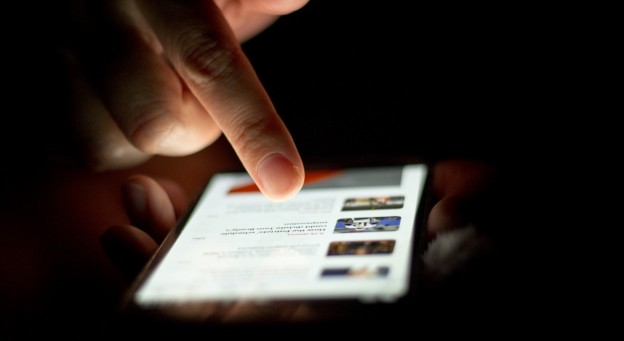The following piece is a guest post from Kunal Gupta, the founder & CEO of Polar. MediaShift occasionally publishes guest posts from industry leaders. Guest posts do not necessarily reflect the opinions of this publication. Read more about MediaShift guest posts here.
Branded content is emerging as a dominant source of publisher revenue in the digital era, and it shows no sign of slowing down. Business Insider predicts that spending on native advertising and branded content will hit $21 billion by 2018.
Over the past year, our platform at Polar has worked with publishers like Conde Nast, Huffington Post, Refinery29, Gannett, Telegraph, News AU, Economist and others, helping to manage the promotion, distribution, optimization and reporting of their branded content programs. By working with more than 2,000 publisher sites and helping them distribute 6,200+ campaigns and 46,000+ branded content articles over the past year, we were able to glean interesting benchmarks and insights on the state of branded content.
Below are some highlights from our research showing how branded content, or the post-click-destination in native advertising, is performing.
Smartphones Continue Dominance
Smartphones have the highest click-through-rate (CTR) for native ads. More research from Polar’s Data Science Team shows time-spent on branded content (AKA the post-click destination or landing page) is just as impressive. Smartphone readers are spending 63 percent more time on branded content than desktop readers. This is not as high of a percentage as smartphone’s CTR, but it’s an impressive number nonetheless.
Several factors can explain smartphones’ dominance in time-spent. The linear path of the reader ensures there are fewer distractions and fewer chances to click away from the sponsored content, as opposed to the desktop where a reader is faced with several browser tabs and applications vying for their attention. Also, content is increasingly tailor-made for the mobile format, and it’s showing that publishers know how to keep those users engaged.
Engagement with branded content on smartphones is significantly higher than on desktop or tablet. Combined with an average CTR that’s 137 percent higher than on desktops, the greatest opportunity for advertisers is on mobile. Publishers should focus attention on a ‘mobile-up’ approach to content design and experience to achieve higher engagement.
Consumer Staples’ Success
When establishing a comprehensive sponsored program, publishers need to know exactly what resonates with their readers.
Choosing the right partners for a branded content campaign is important to both publishers and brands; making sure a brand aligns with a publisher’s brand goes a long way to establish constant success in time-on-site, engagement, and viewability of the post-click destination.
Our research shows that “consumer staples” edge out other categories for the top spot, performing 11 percent above average. Consumer staples gravitate toward content that’s tangentially related to their brand rather than clear calls- to-action, explaining the longer time spent. Similarly, with health-care and energy. there is a research and showcase element that increases dwell time.
Energy (3 percent greater than average), health care (5 percent greater than average) and IT (average) all follow, while consumer discretionary (non-essential items) comes in last in time spent by a wide margin (40 percent below average). And while financial publications have the highest time spent for branded content, financial-focused branded content performs 20 percent below average.
Publishers that partner with advertisers that align closely with core audience and native editorial nature are seeing significantly greater engagement with branded content. Publishers need to remember that native advertising refers not only to the look and feel of the ads and articles, but also to the nature of the content.
A Change in Average Time Spent
Average time spent with branded content has decreased 9 percent in Q1-2016 over Q1-2015, and publishers are curious as to why.
From Q1-2015 onward, engagement numbers spike as compared to previous quarters. This is correlated with fewer campaigns being executed during Q1 traditionally, thereby reducing user fatigue. Time spent decreased 21 percent from Q1-15 to Q4-15, likely due to an increase in the volume of branded campaigns. Q4 especially encapsulates the entire holiday advertising cycle, thus flooding the market with new entrants in the branded content space, many of which are not familiar with how to keep an audience engaged.
Given the slow Q1 starts for sponsored content, average-time-spent has remained remarkably consistent in the past year, as publishers refine their programs and display their expertise in the native promotional format.
This compares well with Polar’s State Of Premium Native Benchmarks, which shows a spike in impressions for Q4 native campaigns. Q4-2015 saw almost 300,000 impressions per creative, owing to the sheer volume of campaigns served on the platform at that ad heavy period.
With all this in mind, average time spent (ATS) has remained relatively stable across our customers over the past five quarters. Perhaps overall weak campaign renewal rates are a symptom of engagement rates that have stabilized. Publishers with strong ATS rates have an opportunity to differentiate by promoting better user engagement with audiences.
Publishers have a lot to look forward to in the premium branded content space, as long as they are mindful of these trends and adhere to consistent high-quality placements and content experiences that serve a reader rather than deceiving them. The above data is based on premium publishers using Polar’s platform to manage their branded content programs. The complete report is on Polar’s site.
Kunal Gupta is the founder & CEO of Polar and a Founding Member of Publisher 2020. Polar provides a technology platform that over 2,000 publisher sites around the world use to strengthen and grow their digital content marketing businesses. Connect with him on LinkedIn Medium or Twitter.




